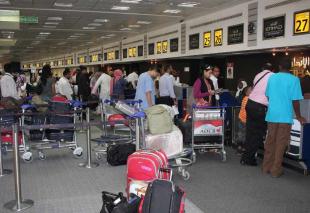

MidEast carriers see 9.1% demand growth in Sept

Middle East airlines saw a 9.1 percent growth in passenger demand in September, while growth in cargo volumes led the world, latest data from the International Air Transport Association (IATA) showed on Monday.
While the region's carriers lagged passenger growth in Latin America and Europe last month, they outperformed the global average of 5.6 percent higher than the same month last year.
IATA said that the Middle East demand growth was ahead of a capacity increase of 8.5 percent.
While global air freight posted a 2.7 percent contraction for September compared to September 2010, Middle East cargo volumes grew by 4.2 percent, the best performance in any region, IATA's figures showed.
Tony Tyler, IATA’s director general and CEO, said: “September’s strength in passenger demand was a pleasant surprise. Freight demand contracted for a fifth consecutive month and this trend is in line with falling business and consumer confidence.
"We are still expecting a general weakening in passenger traffic as we head towards the year-end,” added Tyler.
International air travel volumes rebounded to levels reached in July, following a dip in August.
Globally, passenger load factors stood at 79.5 percent in September, slightly below the 80.1 percent recorded for the same month last year.
Latin America carriers reported the largest increase in demand at 10.6 percent, followed by European carriers (9.2 percent), which came despite the continuing Eurozone crisis.
Freight volumes worldwide have fallen significantly during the third quarter. By September, freight volumes were five percent below those carried at the end of the first quarter.
IATA said that despite stronger than expected growth in passenger markets during September, the industry is bracing for more difficult times ahead.
Its recent Airline Business Confidence survey reported a significant decline in profitability expectations over the next 12 months.
IATA is expecting profitability to decline from $6.9bn in 2011 to $4.9bn in 2012 for a margin of just 0.8 percent.